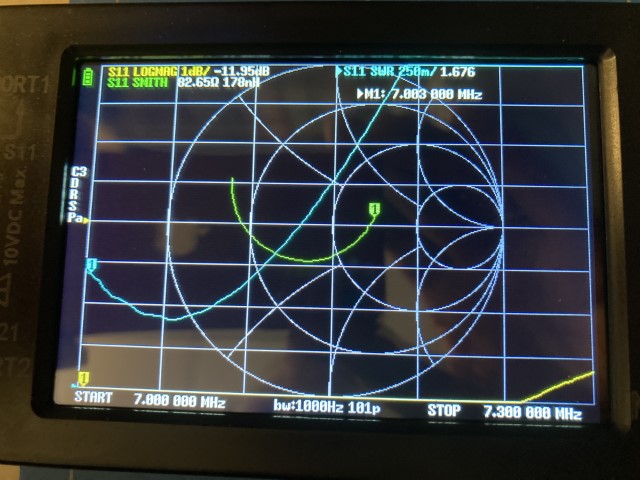Yesterday I received my NanoVNA (small Vector Network Analyzer). Among other things we can measure the return loss in antennas (or the Voltage Standing Wave Ratio or VSWR for short).
Return loss or VSWR
VSWR is the ratio between the energy that goes to into the transmission line TO the antenna and the amount of energy that is reflected back FROM the antenna. It is an indication of the match (or mismatch) between transmitter and antenna. Ideally we want a ration of 1:1, indicating that ALL energy is used for our transmissions. The higher the ratio becomes, the more energy is reflected back into the transmitter. Large mismatches can damage the transmitter, so it’s important to have a proper match, as close to 1:1 as we can get. Have a look here for more details.
Traditional measures
To get a rough estimate of such a match, we often find VSWR meters between transceivers and their antennas. And to counteract the negative effects of mismatches we also see ‘Antenna Tuners‘ Mine look like this:
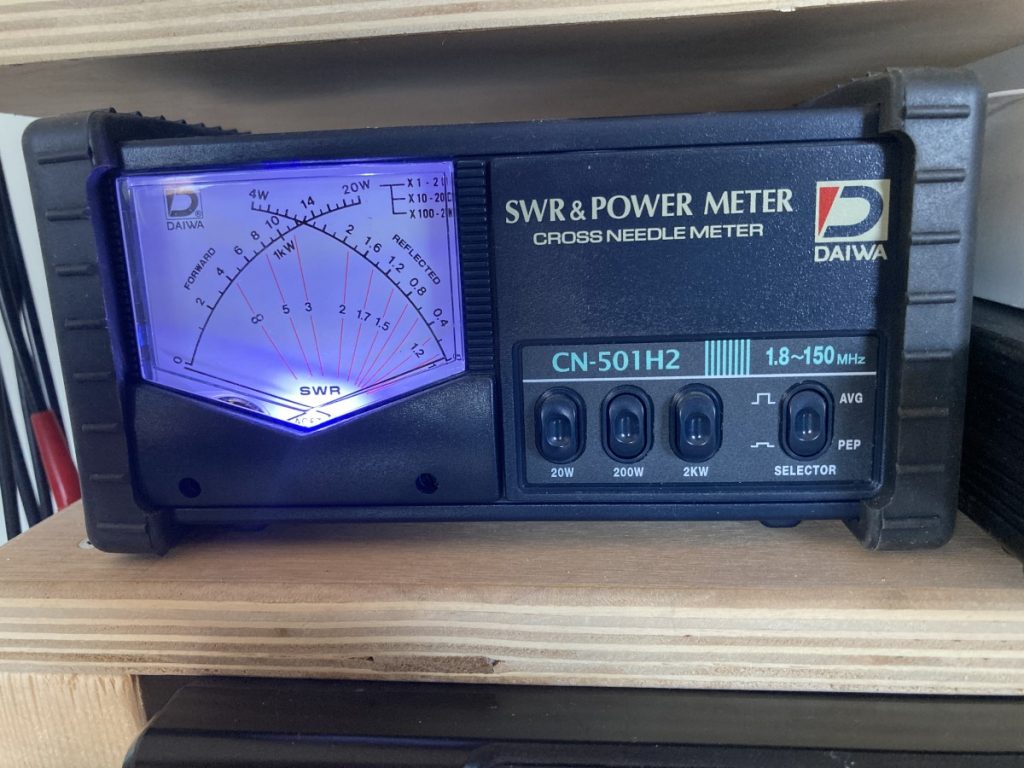
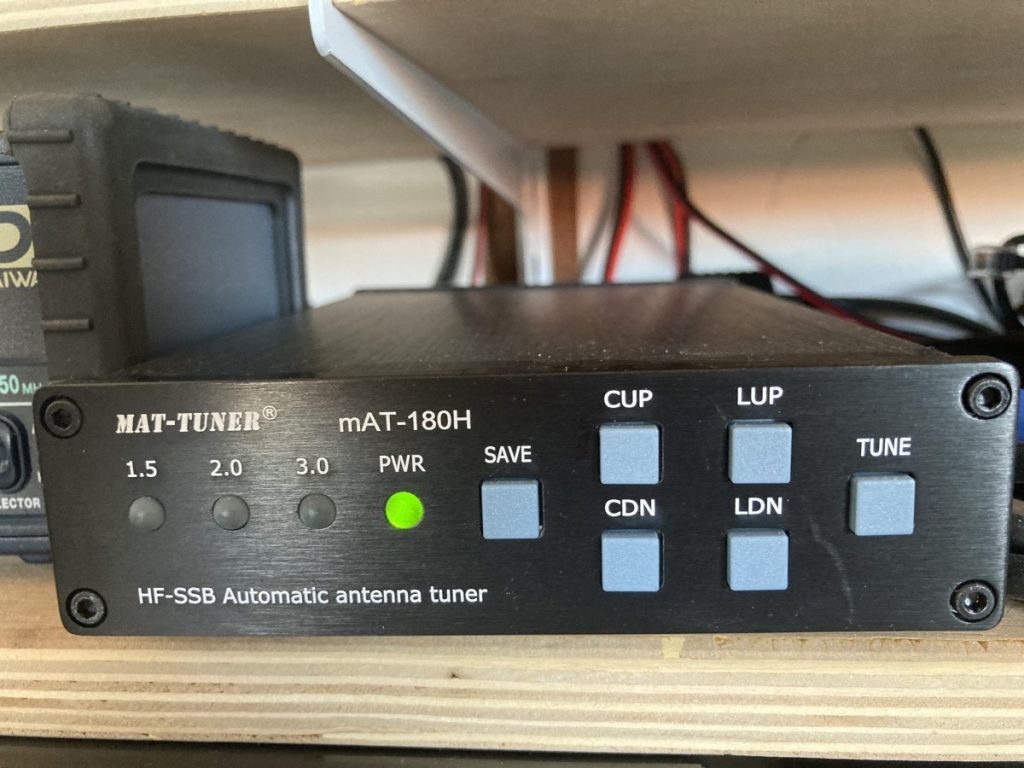
Tuning the antenna?
Actually, the antenna tuner has a misleading name. It does in no way ‘tune’ the antenna. What it does, is that it counteracts the negative effects of an impedance mismatch by bringing proper amounts of inductance and / or capacitance in the transmission line, in such a way that the transmitter ‘sees’ a match as close as possible to 1:1.
Okay, lets analyze!
Using my new analyzer, today I measured my antennas on all frequencies that are available to beginning radio amateurs in the Netherlands.
Antennas
The antenna I use for 2 meter and 70 cm is a dual band Diamond X-300N. It performs rather well on both bands, results below.
For the HF bands I use a HyEndFed triple band antenna for the 10, 20 and 40 meter bands. This antenna needs an antenna matching unit, as we can see in the results further down.
Measurements
The measurements I performed were conducted over all five bands where I will be allowed to transmit after passing my exam, 2 meter, 70 cm, 10, 20 and 40 meter. So that’s five frequency bands for which I measured the minimum and the maximum VSWR.
In the graphs below, the green line is the so called ‘Smith chart‘ representation of the impedance of the antenna. When that’s above the middle line, the inductance is dominant, when below the line, the capacitance is dominant. This can be used to determine how an antenna tuner can compensate the mismatch.
For each separate band I performed a calibration at the end of my measuring lead, before connecting it to the respective antenna leads. Below are the results per band:
70 centimeter (436 – 440 MHz)
As you can see, the Diamond performs very good on this 70cm band:
- minimum VSWR is 1.04 at 433.660 MHz
- maximum VSWR is 1.22 at 430.780 MHz
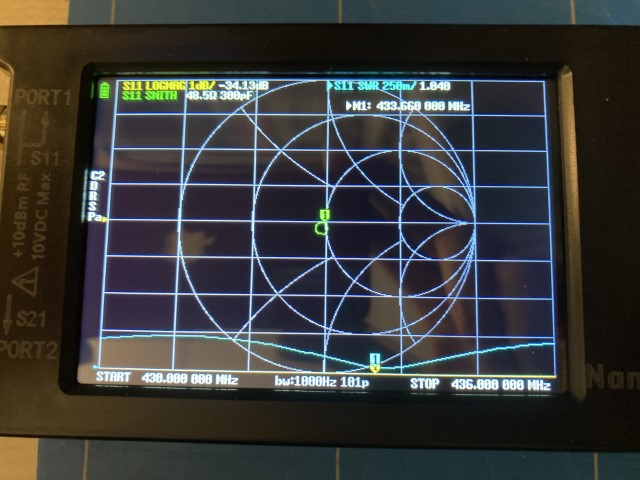

2 meter (144 – 146 MHz)
Also on the 2 meter band the Diamond performs very good:
- minimum VSWR is 1.19 at 144.938 MHz
- maximum VSWR is 1.40 at 146.940 MHz
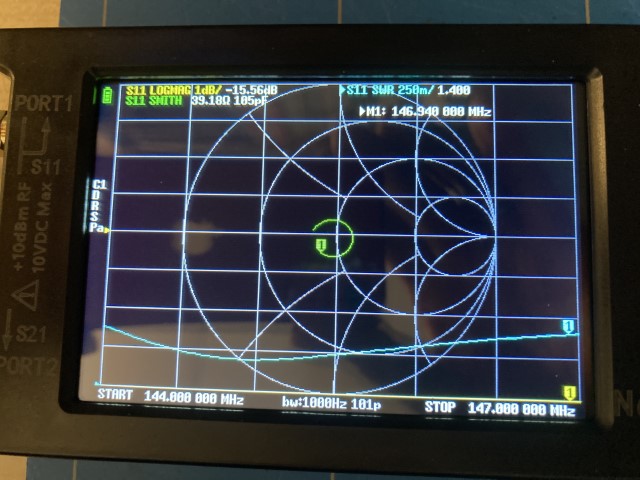

10 meter (28.000 – 29.700 MHz)
The HyEndFed antenna does well on the 10 meter band:
- minimum VSWR is 1.08 at 28.000 MHz
- maximum VSWR is 1.61 at 29.700 MHz
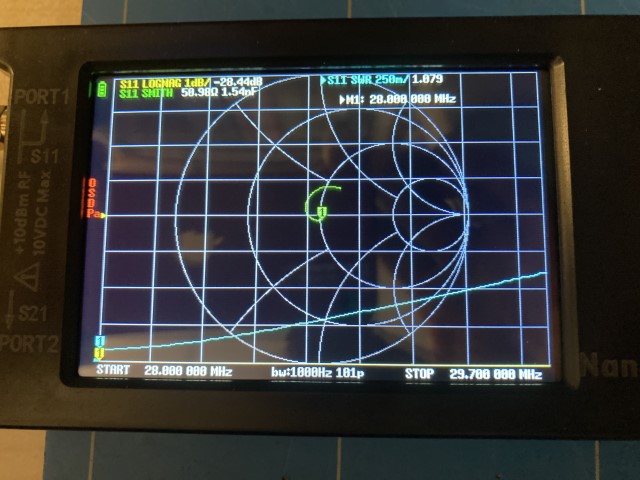
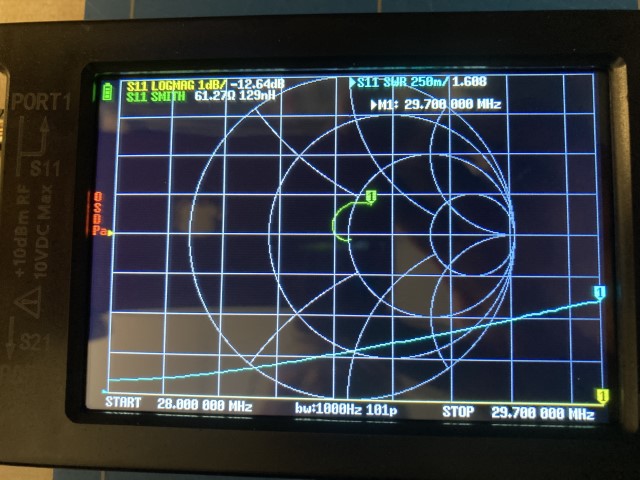
20 meter (14.000 – 14.350 MHz)
Also the band coverage of the HyEndFed for the 20 meter band is pretty good:
- minimum VSWR is 1.31 at 14.329 MHz
- maximum VSWR is 1.68 at 14.000 MHz
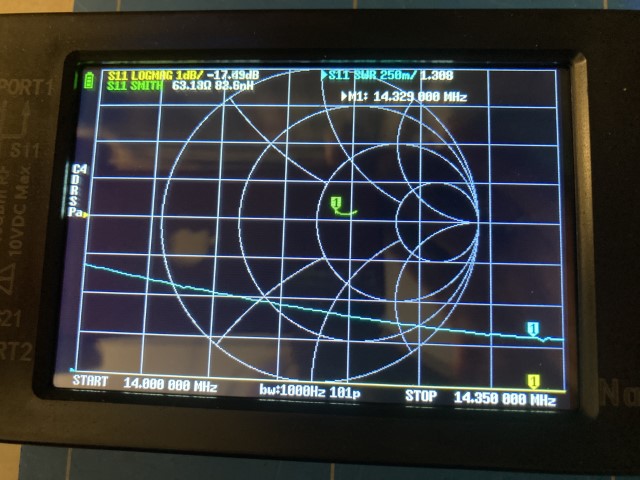
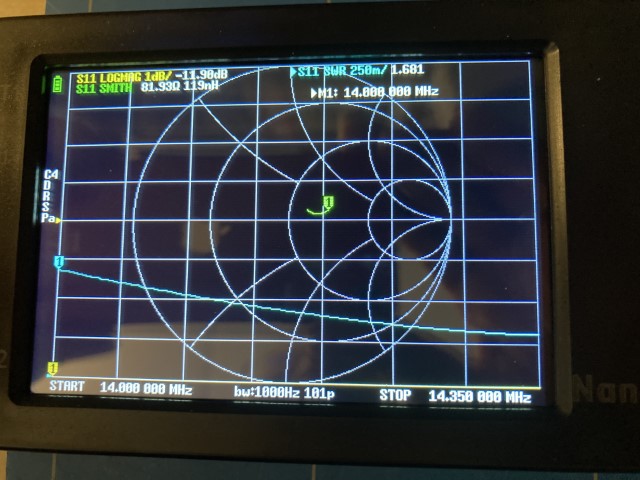
40 meter (7.000 – 7.200 MHz)
On the 40 meter band, the HyEndFed does perform rather well from the start of the band up to a point. An antenna tuner is a necessity for this band:
- VSWR at the start of the band is 1.68 at 7.003 MHz
- the minimum VSWR is 1.42 at 7.054 MHz
- the highest frequency where the VSWR is under 2 is 7.126 MHz (VSWR is 1.94)
